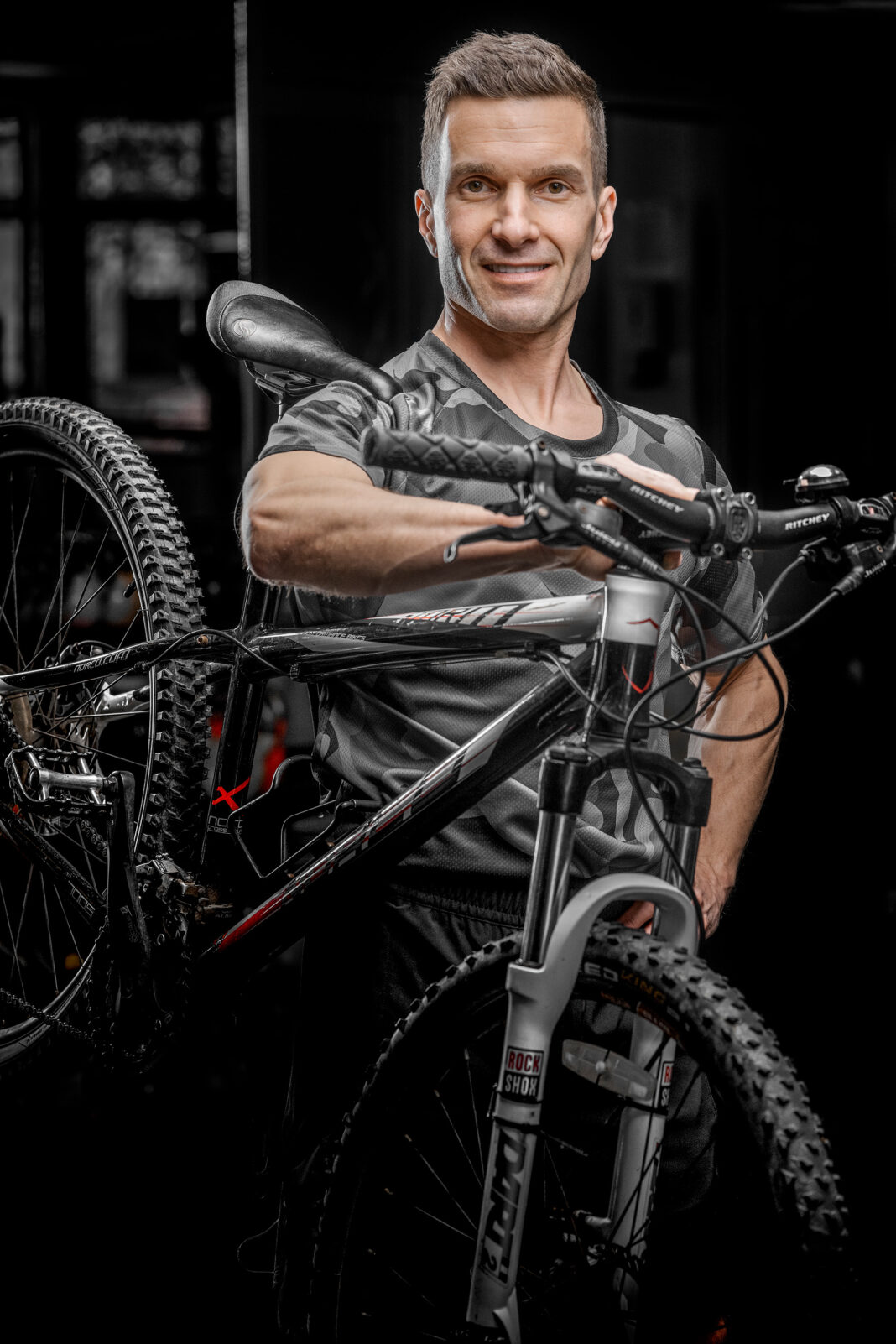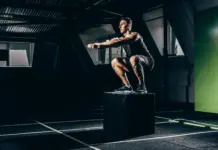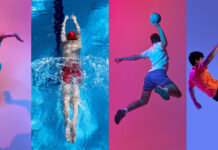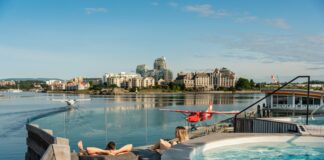Mountain biking is a great way to get in cardiovascular exercise and can also help increase muscle strength, reduce stress and anxiety, and improve balance and coordination.
Mountain biking is all about counterforces—you must be able to pump the bike to carry speed, but also be able to absorb an unexpected bump, root or object along the trail or path. Those two counterforces are opposite movements, but equally important. Keeping your body position centred on the bike at all times requires countless counter-movements as you have to move your body backwards and forwards, and side to side, as well as push up and down when new conditions or objects come at you on the trail. It’s for this reason that training with exercises that work different parts of the body simultaneously, especially those that work diagonally, mimic the movements used on the bike.
For any program to be successful for any athlete, it has to address the needs posed by their sport. In my experience there are five main areas that should be focused on to maximize your time and effort in the gym and on your mountain bike:
- Injury Prevention – Should be the top priority for any athlete no matter what sport.
- Core Strength – The core is where building a strong, injury-resistant body begins. When the core gets stronger, it’s more efficient at preventing low-back fatigue, and is better at engaging in high-impact movements like hard sprints and helping to absorb a rough landing.
- Grip Strength – Helps keep a rider always in control, especially during extended downhill sections, leading to better overall endurance.
- Hip Strength – The hips (hamstrings and glutes) are the powerhouse muscles of the lower body that a rider relies on the most to drive their pedalling strokes. Climbing hills, sprint efforts and absorbing trail impacts with your legs can all be improved through focusing on exercises like deadlifts and Bulgarian split squats that target the hips instead of the quads.
- Strength / Power Endurance – Increasing strength and power in key areas will add to one’s overall physical performance and overall biking enjoyment. Reducing imbalances between limbs and muscles is directly responsible for reducing injuries, delaying shortness of breath or even quitting early because of tired, sore legs.
Before beginning any training plan, check in with your doctor or health care professional.
Warm up: Prepare your body with five to ten minutes of light cardio activity to get your mind and body ready for training. Hop on a bike, rower, air bike, treadmill or elliptical machine if you have access to a gym or go for a quick jog, jump rope or perform jumping jacks if you don’t.
Pro Tip: Inhale during initial exertion, then exhale as you return to the starting position. Breathe regularly during faster exercises.
When you first start these exercises, begin with two sets and rest for 60 to 90 seconds between each. As you feel more fit or if you want more of a cardio challenge, increase to three sets and rest for 30 to 45 seconds.
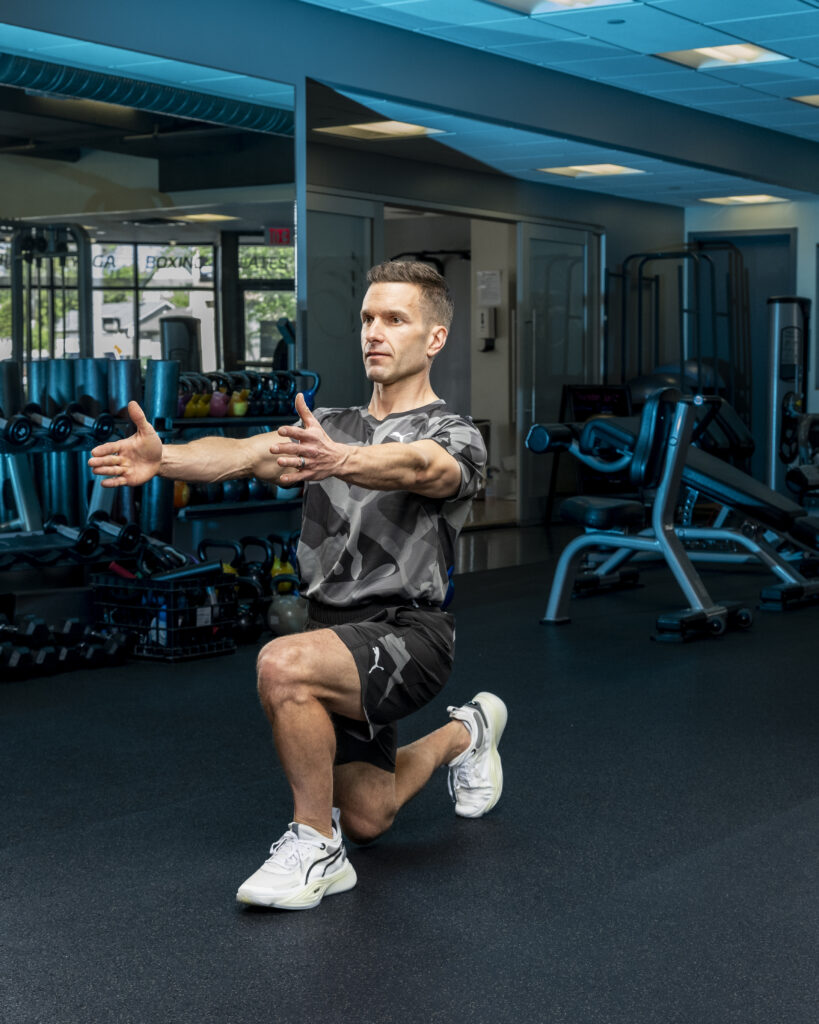
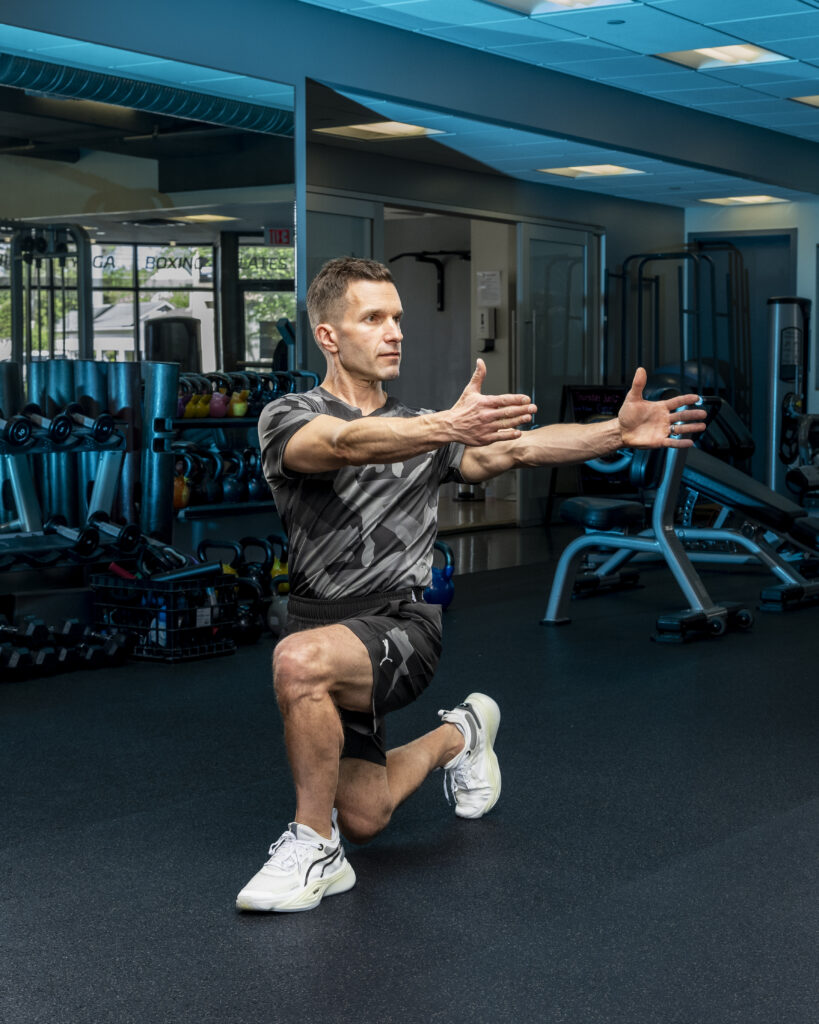
Walking Lunges with Core Rotations
2-3 sets of 15 reps per leg
Equipment: None – bodyweight
- These lunges warm up your quads, hips and core to get them ready for the exercises that follow. These are the areas of your body you’ll
engage most when mountain biking. - Stand with your feet slightly apart.
- Step one foot forward into a lunge. Your back knee should drop at a right angle to the ground. Your forward knee should also be at a right angle.
- As you step forward, rotate your body to the side in the direction of your lead knee. Have arms at chest height, slightly elevated from your sides.
- Drive up and through your forward leg to take the next lunge step. Your back knee should now be out front.
Repeat.
Pro Tip: If you don’t have enough space, you can stay in one spot and alternate your legs. Make it easier by keeping your back leg straight. Ensure that your knees do not go inward and stay in a straight line with your foot and hip.
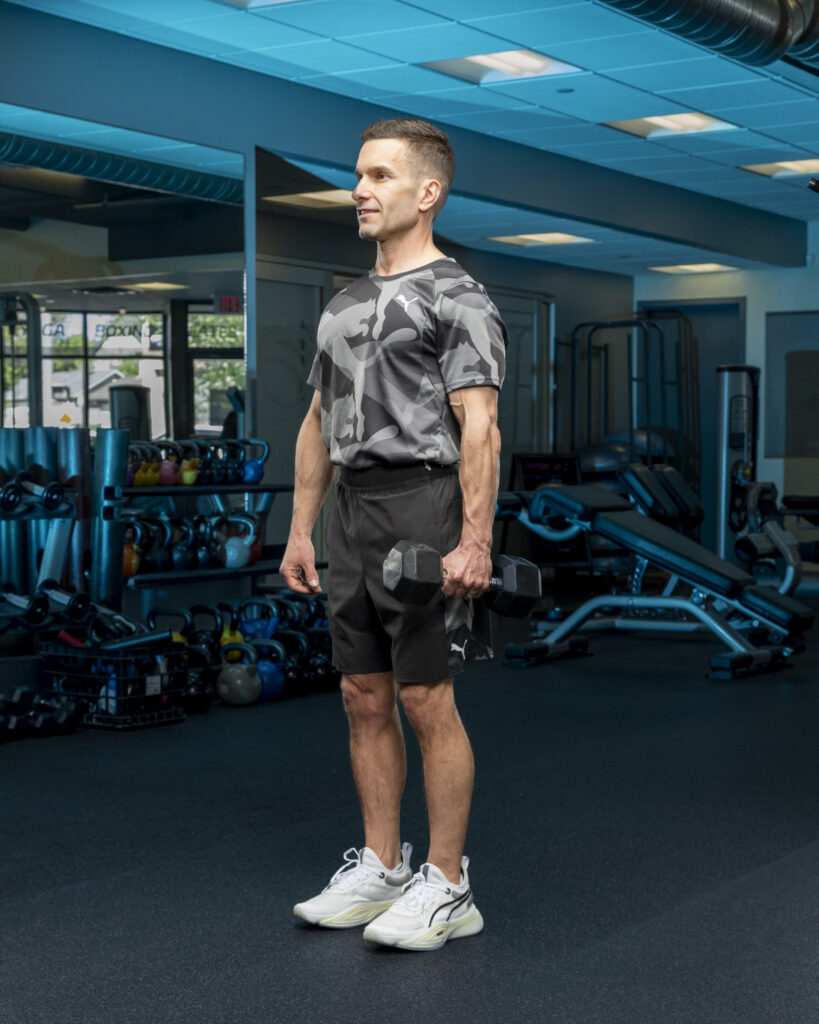
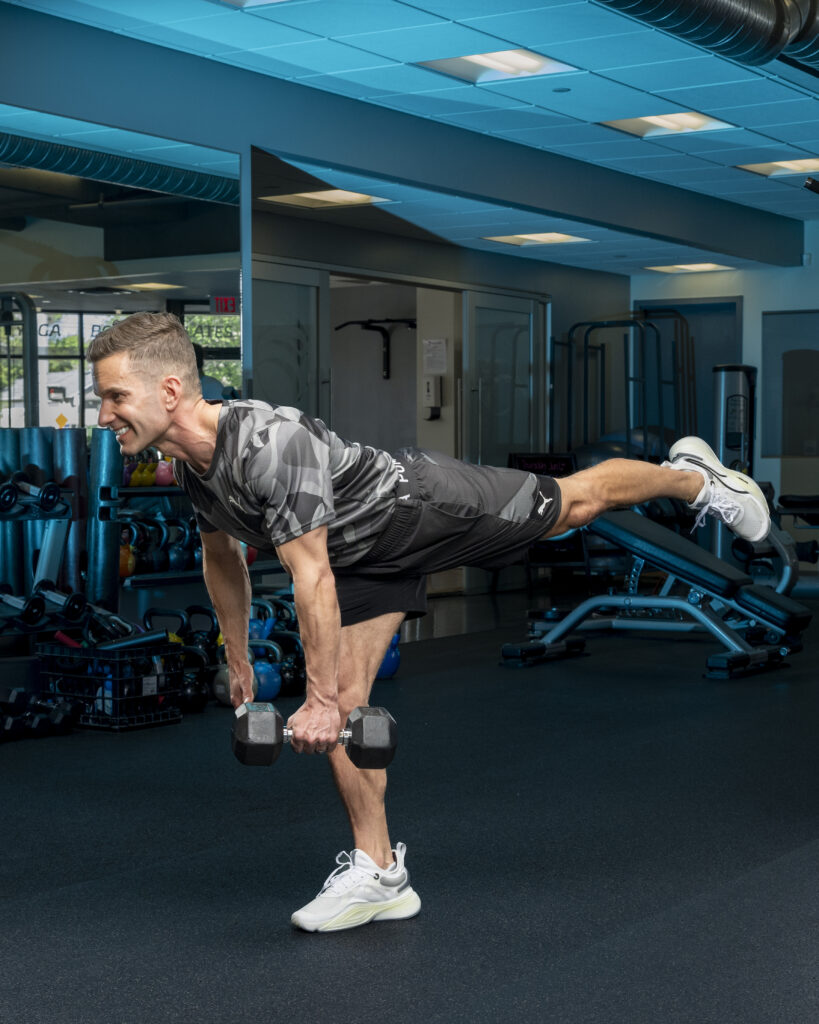
Single-Leg Deadlifts
2-3 sets of 15 reps per leg
Equipment: One moderate-to-heavy dumbbell or kettlebell
- Stand with feet shoulder-width apart, holding a dumbbell/kettlebell in your left hand.
- Centering your weight over your right foot, bend forward at the hips as you extend your left leg backwards; maintain your balance as you lower the dumbbell/kettlebell toward the floor. Do not let your hips rotate.
- Return to the start position by squeezing your glutes; your core should remain engaged and your back should remain straight.
- Switch to your other side and repeat.
Pro Tip: Modify the difficulty by adjusting how far down you bend toward the floor. You can also use a lighter or heavier dumbbell
or kettlebell.
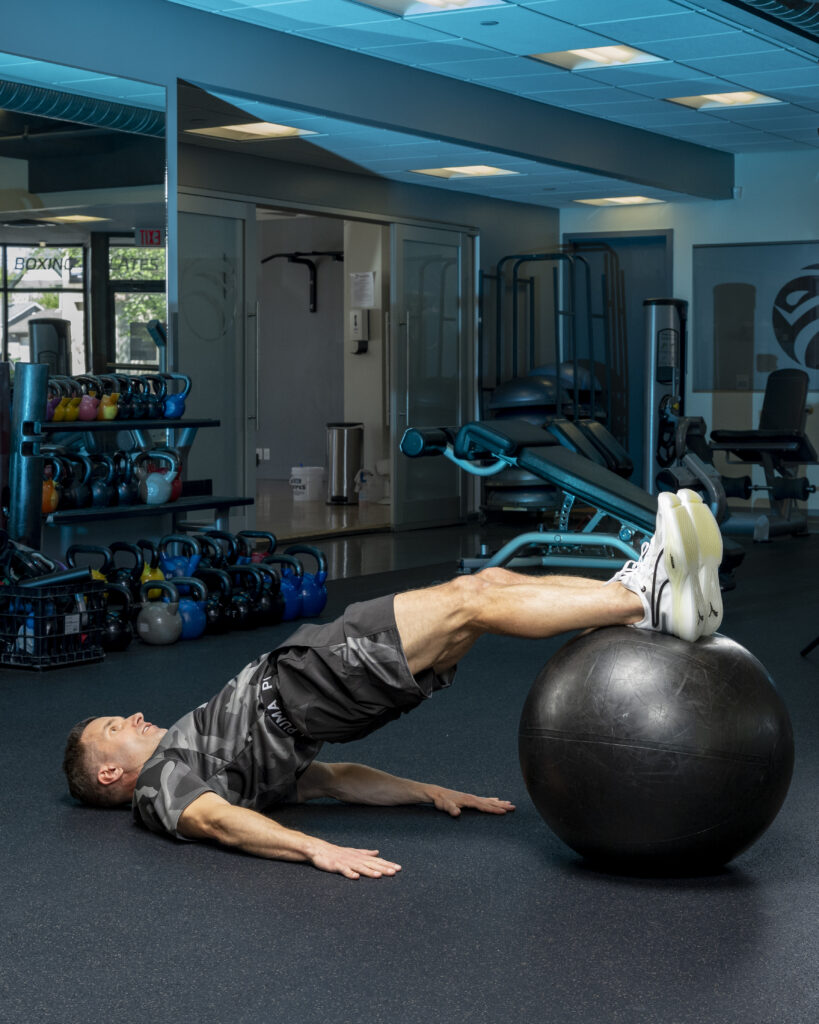

Bridge with Hamstring Curls
2-3 sets of 15 reps
Equipment: TRX or large exercise ball
- This exercise strengthens your glutes and hamstrings for more powerful and efficient pedalling; these muscles also help support your knees.
- Lie on your back with your arms extended down by your sides, with your legs extended and your heels either resting atop the exercise ball or tucked into the TRX handles.
- Tighten your glutes and abs as you pull your legs back, rolling the ball or pulling the TRX handles toward your butt with your heels.
Stop when your knees are bent at slightly more than 90 degrees. - Extend your legs straight again, rolling the ball or TRX handles away from you.
- Repeat.
Pro Tip: If you struggle to maintain balance as you roll the ball, place your heels slightly farther apart on the ball and move your arms away from your body; increase difficulty by keeping your heels closer together and by moving your arms closer to your body.
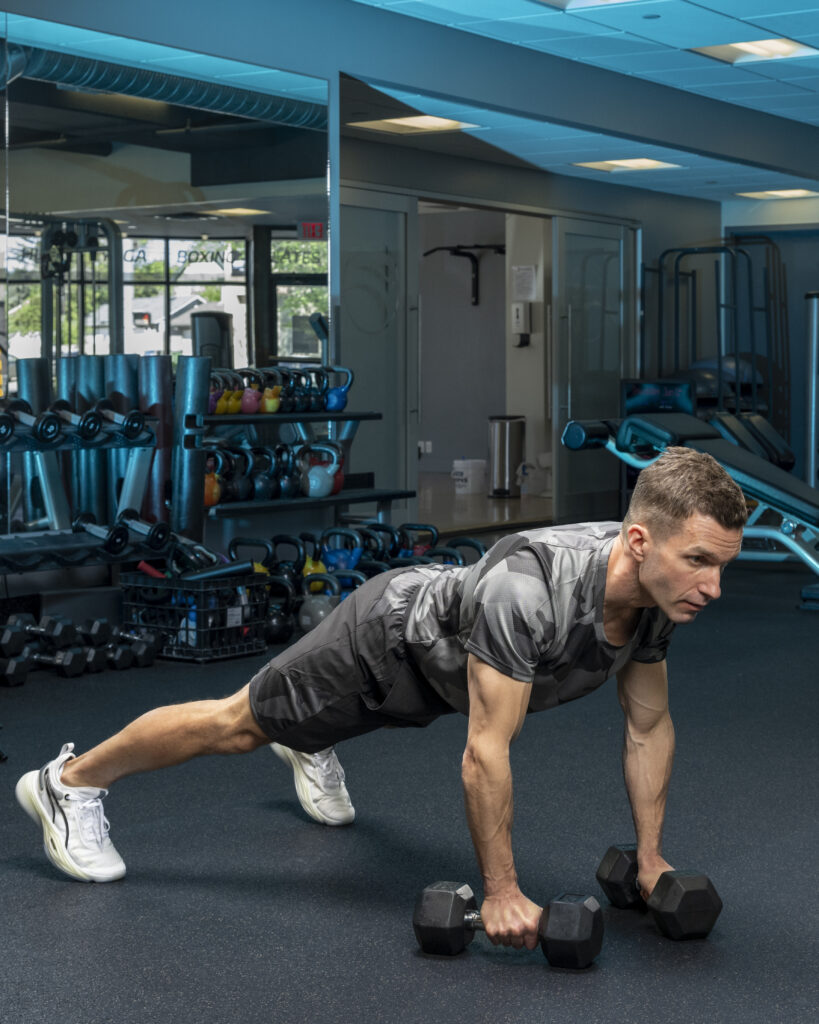
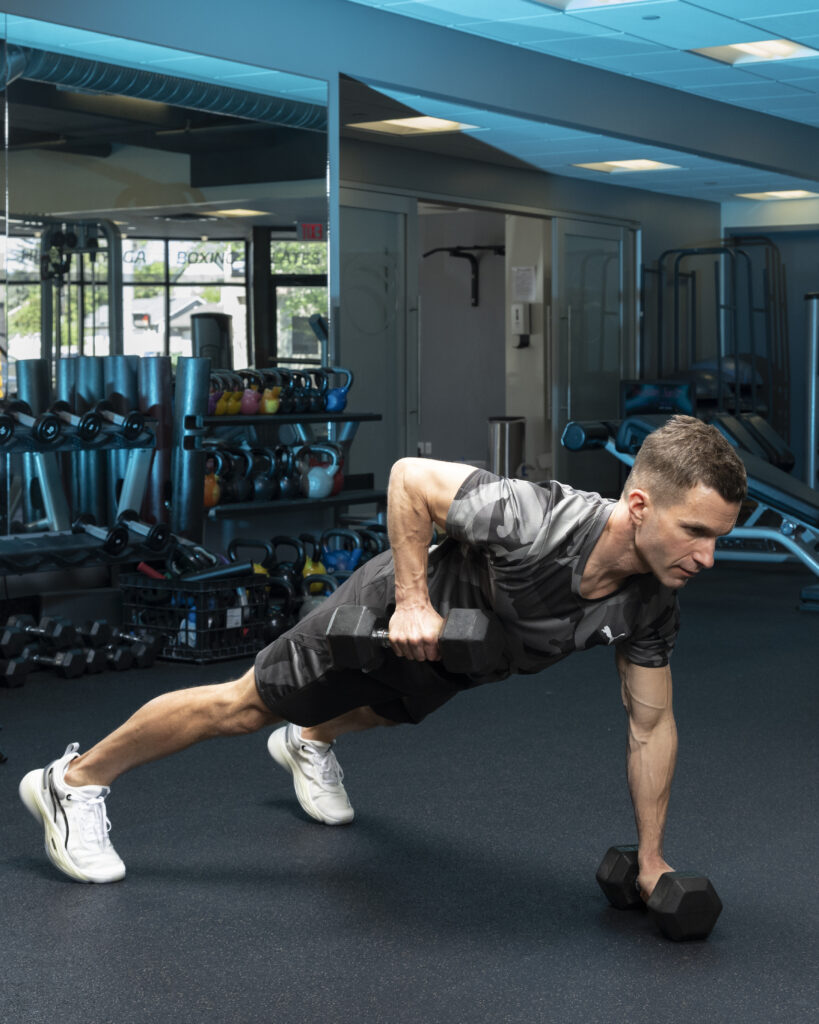
Plank with Single Arm Rows
2-3 sets of 15 reps per arm
The plank targets your abdominals and improves core and neck stability. The rowing element works your lats and shoulders. Keeping your core strong will protect your lower back during long, hard rides. A strong core helps maintain proper riding position, allowing you to put less pressure on your forearms, wrists and hands.
Equipment: Two moderate-to-heavy dumbbells
- Begin in a plank position with hands on dumbbells and feet set wide apart.
- Row one arm/elbow back, bringing the dumbbell up toward your rib cage.\
- Return dumbbell to ground and repeat.
- Maintain a plank position throughout the exercise by keeping the body straight from head to toe.
- Do not let hips rotate or drop; keep chin slightly tucked, looking at the ground ahead of you to better engage neck muscles.
- Switch arms.
Pro Tip: If you are unable to maintain a stable trunk while on your feet, drop to your knees to complete the exercise. You can also use a lighter or heavier dumbbell.
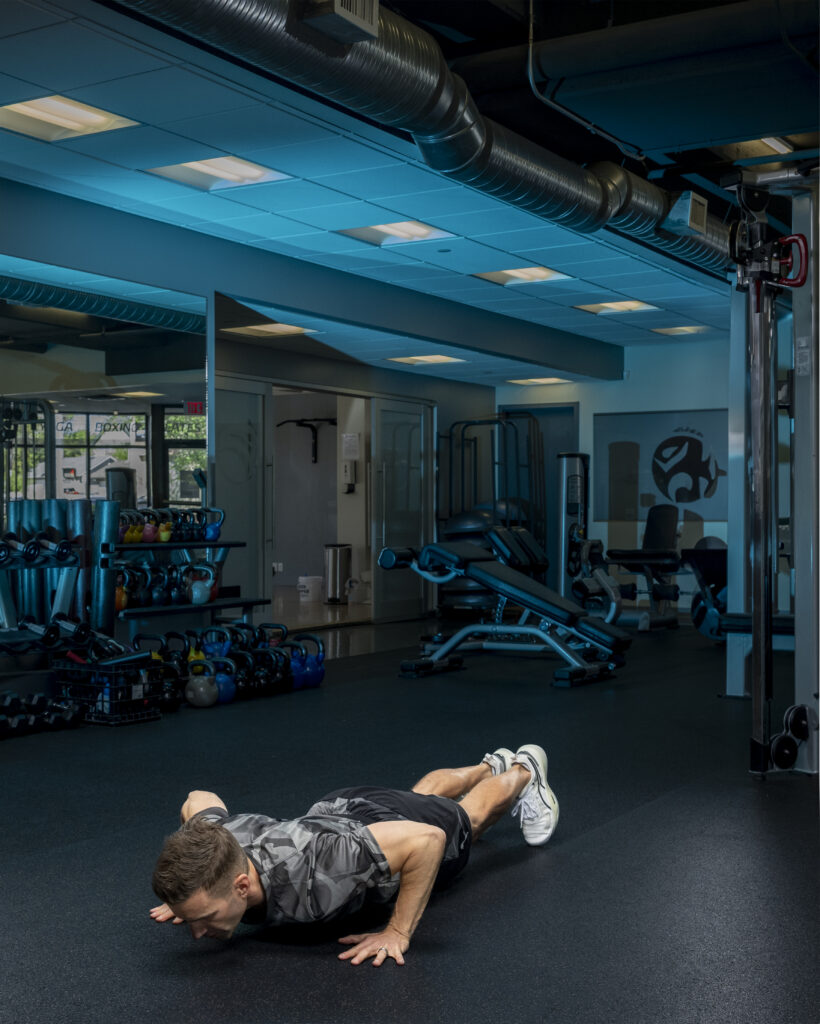
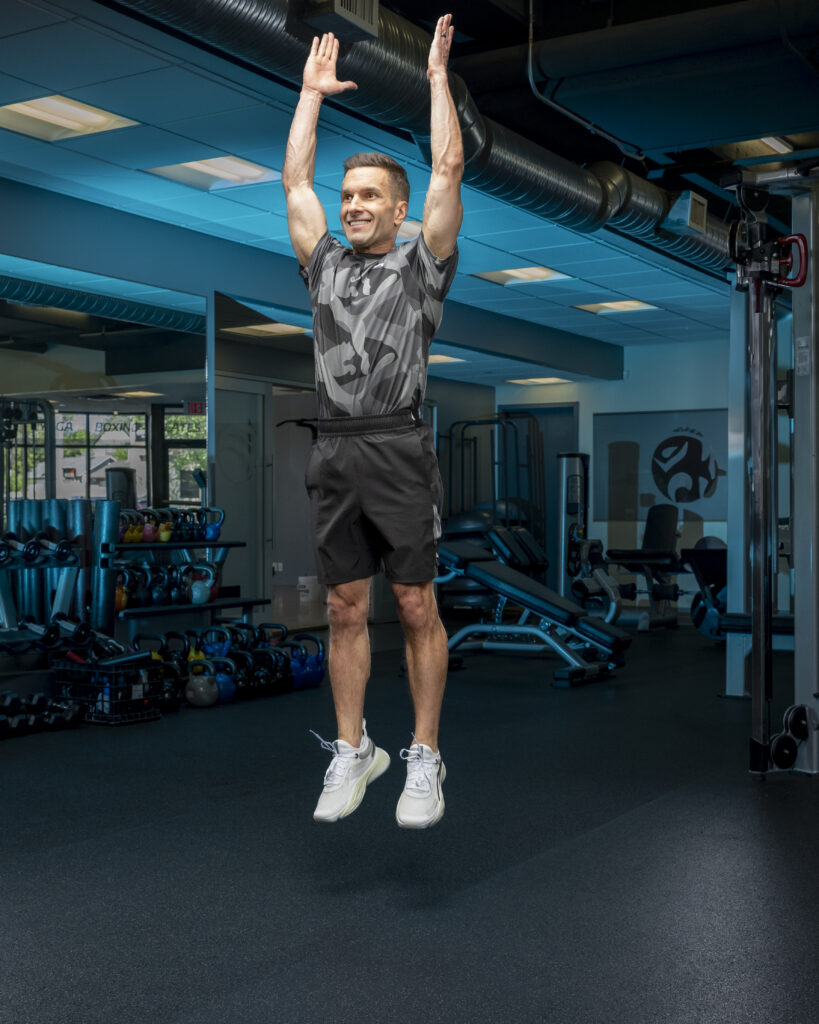
Burpees
2-3 sets x 15 reps
This plyometric exercise targets your entire body. It works your quads, glutes, hamstrings, calves, abs, arms, chest and triceps. It will prepare you for the explosive bursts you’ll need when climbing steep hills or riding over uneven terrain.
Equipment: None – bodyweight
- Stand with your feet shoulder-width apart and arms at your sides.
- Explode straight up to jump off the ground while reaching your hands up over your head.
Land softly with knees bent and in one smooth motion, squat down, place your hands on the ground in front of you and kick both feet back so you’re in a plank position and lower your body to the floor. Press back up into a plank position. - Now jump your feet in toward your hands then explode straight up to start the next burpee.
- Repeat.
Pro Tip: Instead of kicking both feet back when you are in a plank position, you can make this exercise easier by stepping one foot back at a time. If you are unable to do a push-up comfortably, leave it out.
Bulgarian Split-Squats
2-3 sets x 15 reps per leg
The Bulgarian split-squat (BSS) is a unilateral lower-extremity strength exercise similar to a split-squat, but performed by supporting the foot of the non-weighted leg on an elevated, stable structure placed behind the body that is utilised for both performance enhancement and rehabilitation from injuries.
Equipment: Two moderate-to-heavy dumbbells
- Stand 2-4 feet in front of a bench (depending on your height), facing away.
- Have one leg resting on the bench behind you, laces down, with your feet in line with your hips and DB’s in each hand with arms long by your sides.
- Sink your body down until the knee of your back leg almost touches the floor. The front knee should be at a right angle.
- Push up through your front foot to return to the start position.
- Switch legs.
Pro Tip: As a rule of thumb, your front foot should be three footsteps out from the bench and your rear knee should come all the way to the floor. If it doesn’t, lower the bench, but be careful not to drive your knee into the ground.
Photography by Graham Mckerrell
Clothing Courtesy PUMA
You may also like: Workouts
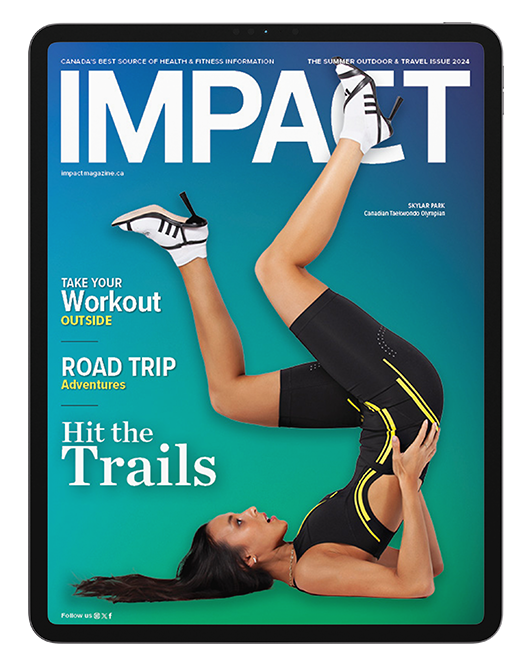
Read This Story in Our 2024 Summer Outdoor & Travel Issue
Featuring Canadian Taekwondo Olympian, Skylar Park. Must-visit adventure destinations across Canada. Your best trail running season ever with FAQs and threshold training plans. How (and why) gravel biking can rule your summer. Essential preparation to stay injury-free during hikes. Zero-waste your hiking and camping trips like a pro. Treat yourself with a Rustic Strawberry Chocolate Tart or Dairy-Free Vanilla Ice Cream, and so much more.


